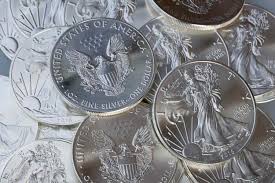For centuries, silver was at the heart of global trade and economic systems, serving as both a currency and a store of value. Its intrinsic qualities—durability, divisibility, and beauty—made it universally recognized as a medium of exchange. But silver’s role extended beyond its physical attributes. It powered empires, connected continents, and drove the first era of globalization. Despite its early prominence, however, silver’s monetary dominance eventually faded, supplanted by gold and, later, by fiat currencies.
In this chapter, we explore two critical questions: Why did silver rise to prominence, and why was it eventually abandoned? By tracing the economic, political, and technological forces that shaped silver’s role over time, we uncover the fascinating story of how a metal that once symbolized prosperity and stability became a secondary player in the modern financial system.

Why Did Silver Rise to Prominence?
- Abundance and Accessibility:
Silver was more abundant than gold, making it accessible for widespread use while still maintaining scarcity that gave it value. Its availability in the Americas after the Spanish conquest further solidified its place in global trade. - Universal Acceptance:
Silver was recognized and valued across cultures. From Europe to Asia, it served as a common denominator in trade, especially as Spanish silver coins, like the “piece of eight,” became the first global currency. - China’s Demand:
The Ming Dynasty’s tax reforms requiring payments in silver created immense demand for the metal. This fueled global trade networks, as silver from the Americas and Europe flowed into Asia in exchange for luxury goods. - Practical Qualities:
Silver’s durability and divisibility made it ideal for use in coins and trade. Its higher relative abundance compared to gold made it more practical for everyday transactions while still being valuable enough for international trade.
Why Was Silver Eventually Abandoned?
- Economic Shifts Toward Gold:
By the late 19th century, gold became the preferred standard due to its greater stability and scarcity. Nations like Germany and the United States moved to the gold standard, viewing it as a more reliable monetary base. - Industrial Overproduction:
Advances in mining technology and discoveries of large silver deposits, such as the Comstock Lode in Nevada, led to an oversupply of silver, which devalued the metal and undermined its role in monetary systems. - The Rise of Fiat Currencies:
As economies modernized, the need for a metal-based currency diminished. The flexibility of fiat money allowed governments to better manage inflation and economic crises, making silver-backed systems less practical. - Geopolitical Decisions:
Key decisions, such as the U.S. Coinage Act of 1873 (the “Crime of 1873”), demonetized silver in favor of gold. Similarly, the Bretton Woods Agreement in 1944 sidelined silver entirely, establishing gold as the primary monetary reserve.
Legacy of Silver in the Modern World
Although silver lost its place as a monetary standard, its legacy remains. Today, it is valued for its industrial applications, investment potential, and symbolic association with wealth and beauty. The story of silver’s rise and fall reveals not only the evolution of monetary systems but also the shifting priorities of economies as they grow more complex.
This chapter sets the stage for the book’s deeper exploration of silver’s transformative journey—from its early dominance in global trade to its eventual relegation to a commodity of secondary importance.
